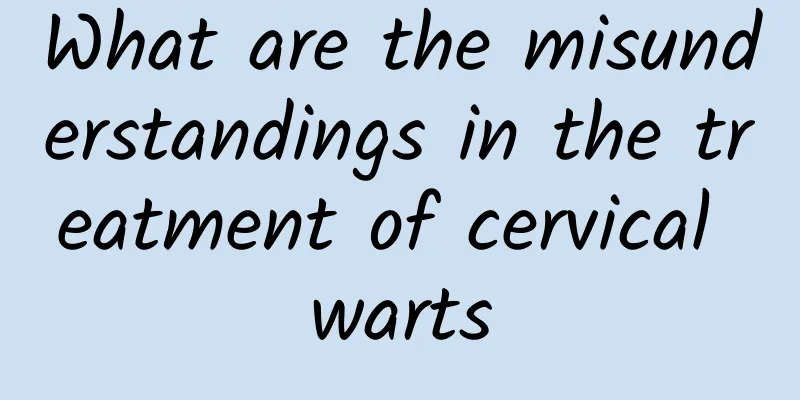What are the misunderstandings in the treatment of cervical warts

|
The clinical probability of cervical warts is very high, and it is also very difficult to cure. When paying attention to cervical warts, many issues need to be considered. For example, there are many misunderstandings when treating cervical warts. Many patients also have some deviations in their understanding of cervical warts. So what are the misunderstandings in the treatment of cervical warts? There are generally four major misunderstandings in the treatment of cervical warts that patients need to know: 1. Will sexual partners be infected with condylomata? Most patients or sexual partners have a history of promiscuity. Studies have shown that more than 40% of patients' spouses also suffer from cervical condylomata, and 20% to 30% of patients have other sexually transmitted diseases. This shows that cervical condylomata are mainly transmitted through sexual relations, but a considerable number of patients' spouses or sexual partners do not have skin lesions, which may be related to the immune status of the infected person. The infection rate of cervical condylomata patients with one sexual contact is as high as 60%, and it is prone to occur in parts that are easily damaged during sexual intercourse. However, clinically, not all contacts develop cervical condylomata, which may be related to the number of viruses contacted and the patient's disease stage. Second, it is difficult to get rid of the root. The pathogen of cervical warts is human papillomavirus, which usually does not enter the blood. After entering the human body, it can lurk in the basal layer of the epidermis, and then enter the cell nucleus as the epidermis replicates, causing cell division and forming clinical skin lesions. Some patients have repeated attacks after treatment, which may be related to subclinical infection, latent infection or reinfection. After multiple treatments, most of them can control recurrence. There are also a few patients who carry the virus for a long time. After a period of treatment of cervical warts, the virus can be suppressed or even disappear due to the improvement of the body's immune status. 3. Relapse is easy. Generally speaking, the recurrence of cervical condylomata most often occurs within 3 months after treatment. As time goes by, the patient's infectiousness decreases, and the possibility of recurrence also decreases. If the patient does not relapse after 6 months of treatment, it is considered clinically cured. If there is no recurrence after one year of treatment, then the possibility of recurrence in the future is extremely small, and the possibility of infection is also extremely small. Therefore, the third month after treatment is a "hurdle". During this period, patients should go to the hospital at any time to check their condition, use medications reasonably, and do not change medications blindly. 4. Infertility. After the cervical warts are completely cured, they are not contagious and will not affect pregnancy and childbirth. After the treatment of cervical warts is completed, if the symptoms disappear and there is no recurrence after one year, you can consider getting married and having children. |
<<: What are the treatments for cervical warts?
>>: What are the treatments for cervical warts?
Recommend
What are the causes of intramural uterine fibroids? The main symptoms of intramural uterine fibroids
What are the causes of intramural uterine fibroid...
Can I detect if I had induced abortion before? Let's take a look
Many girls do not have a good sense of self-prote...
Zeng Kaixuan's fever subsided quickly after giving birth! Slimming Techniques Revealed
Actress Zeng Kaixuan, who entered the family worl...
How to treat right ovarian cyst when pregnant?
Ovarian cyst is a common tumor disease in women. ...
Patients with vaginitis should not undergo abortion
As abortion becomes more and more popular among w...
Expert analysis: How women can prevent bacterial vaginosis
How can women prevent bacterial vaginitis? Gyneco...
A man lost 13 kg of fat by writing a weight loss diary on APP
One of the signs of weight gain is that your pant...
Simply shake off the oil! 3 tips to turn a lazy woman into a lazy beauty!
Eating hotpot is the most comfortable thing, but ...
Pay attention to the early symptoms of ovarian cysts
Once the symptoms of ovarian cysts appear, they m...
Is pelvic effusion 38×15mm serious?
Is pelvic effusion of 38×15mm serious? Pelvic eff...
Patients with pelvic inflammatory disease should pay attention to washing underwear
The hygiene of the underwear of patients with pel...
What are the causes of cervical erosion? Chinese medicine treatment methods for female cervical erosion
I believe everyone knows about cervical erosion. ...
What are the types of pelvic inflammatory disease?
Pelvic inflammatory disease is a common gynecolog...
What causes uterine fibroid pain? What to do about uterine fibroid pain
What causes uterine fibroid pain? Uterine fibroid...
What can I eat to prolong menopause?
Women are a delicate group, and they take very go...









